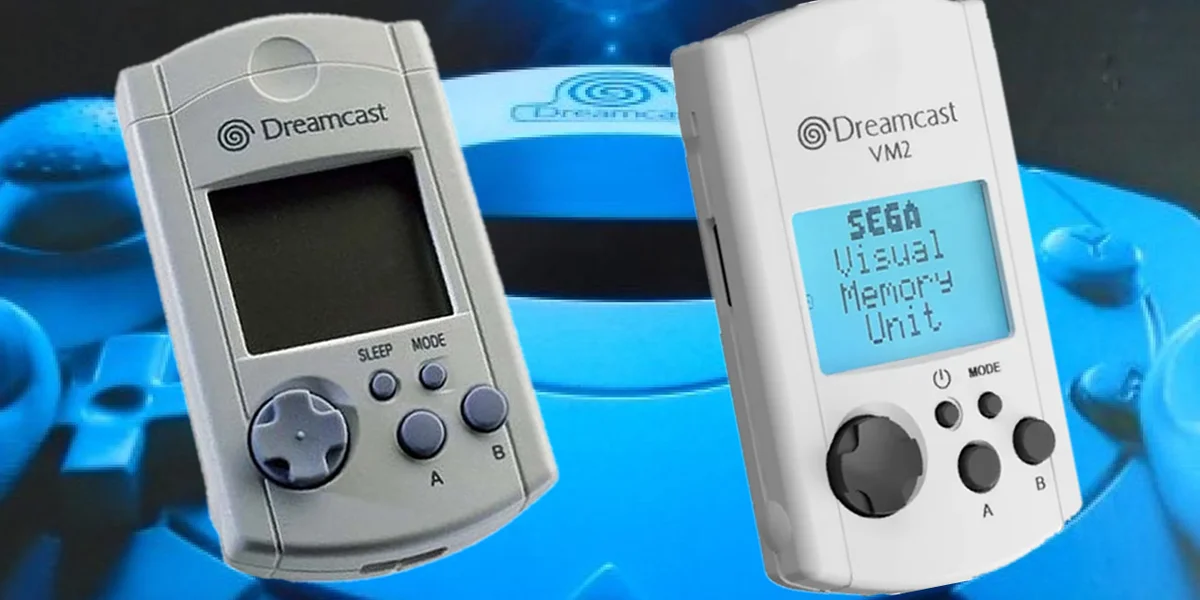Reviews
Dreamcast VM2 Review: A Must-Have Accessory for Retro Gamers

As an avid retro gamer, I am always looking for ways to enhance my experience and immerse myself even deeper into the classics that shaped my love for gaming. One accessory that has recently grabbed my attention is the Dreamcast VM2. For those who have fond memories of Sega’s iconic Dreamcast console, you’ll know that the VMU (Visual Memory Unit) was one of the coolest innovations of its time. The Dreamcast VM2 is the updated version of this memory card, promising a fresh take on a beloved classic. In this Dreamcast VM2 review, I’ll dive into my personal experience with the device, evaluating its design, functionality, and overall worth for any true Dreamcast fan.
The Dreamcast VM2: An Overview
For anyone unfamiliar with the Dreamcast VM2, it’s an updated version of the original VMU. In essence, it’s a memory card that not only saves your game progress but also adds a unique feature: a small built-in screen that can display certain game-related content, like mini-games or extra data. The VM2 takes what was special about the original VMU and refines it, adding more storage capacity and additional features that were designed to enhance the gaming experience.
What immediately drew me to the Dreamcast VM2 was the way it seamlessly integrates into the Dreamcast controller. It plugs directly into the controller just like its predecessor, maintaining the same functionality while improving on the original design in several ways. If you’re a Dreamcast fan, you’ll instantly feel the nostalgia, while also appreciating the slight tweaks that make the VM2 a more reliable and fun accessory.
A Design That Combines Nostalgia and Innovation
The design of the Dreamcast VM2 instantly brought back memories of the original VMU, but with enough modern upgrades to make it feel fresh. The small screen is still monochrome and functional, but it’s bright and clear enough to read small bits of information and navigate through various functions. The overall feel of the device is lightweight, and it’s incredibly easy to hold and use, adding to the sense that it’s a perfect fit for the Dreamcast.
What I really like about the design of the Dreamcast VM2 is how it fits snugly into the controller. There’s no awkwardness or hassle when attaching it to the controller, making it feel like a natural extension of the console. It’s clear that Sega took great care in refining the original concept to ensure the VM2 would be both practical and fun to use. Whether you’re using it to store data, unlock mini-games, or transfer files between units, it feels like a core part of the Dreamcast experience.
How the Dreamcast VM2 Enhances Gameplay
While the Dreamcast VM2 looks similar to the original VMU at first glance, it comes with several important upgrades. One of the first things that caught my attention in this Dreamcast VM2 review was its increased storage capacity. The new model offers more space for game saves and additional data, which is incredibly helpful for games that demand more from your memory cards. The increased capacity also makes it easier to manage game saves without constantly having to swap out memory units.
Another key feature of the Dreamcast VM2 is its ability to store and play mini-games. This was one of the standout features of the original VMU, and the VM2 takes this concept to the next level by offering even more mini-games to unlock. These mini-games are simple but enjoyable, and they provide a fun way to pass the time when you’re not actively playing your Dreamcast games. I spent hours unlocking and playing these mini-games, and they gave me a sense of satisfaction beyond just using the device for saving data.
Seamless Integration with Dreamcast Titles
One of the most significant advantages of the Dreamcast VM2 is its seamless integration with a wide variety of Dreamcast games. The device works effortlessly with many of the Dreamcast’s greatest titles, from classics like Shenmue to action-packed games like Jet Set Radio. The VM2 allows you to store game data, transfer files, and unlock features that wouldn’t be possible with a standard memory card.
I tested the Dreamcast VM2 with several of my favorite titles, and the results were consistently impressive. In Shenmue, for example, the VM2 was used to store character information and track my in-game progress. The device worked flawlessly in Sonic Adventure as well, enabling me to transfer saved data between the VM2 and the game. It felt like these features were not just add-ons, but integral parts of the game experience.
A Fun Bonus: Mini-Games on the Go
Perhaps one of the most charming aspects of the Dreamcast VM2 is its mini-game feature. For those who are new to the concept, the original VMU allowed players to access small, simple games that could be played directly on the unit’s screen. The Dreamcast VM2 continues this feature, with even more mini-games to unlock and play.
These mini-games are a delightful addition to the Dreamcast experience. While they are not the main reason to own the VM2, they add an extra layer of fun that is hard to ignore. Whether you’re waiting for your game to load or just need a quick distraction, the mini-games are a nostalgic throwback to the days when these small handheld games were all the rage. The fact that they are unlocked through gameplay adds an element of discovery and reward, making them feel like a natural extension of your gaming progress.
Pros of the Dreamcast VM2
After spending considerable time with the Dreamcast VM2, I can confidently say it has a lot to offer. Here are some of the key benefits that stood out to me during my experience:
Expanded Storage
The increased storage capacity of the Dreamcast VM2 is an excellent improvement over the original VMU. You can store a significant amount of game data, making it a must-have for anyone who plays a lot of Dreamcast games that require hefty saves. This added functionality reduces the need to constantly swap memory cards, which is something I truly appreciated.
More Mini-Games to Unlock
The mini-game feature, which was already a standout on the original VMU, has been enhanced in the Dreamcast VM2. I found myself unlocking and playing these mini-games in my downtime, and they were a nice bonus to an already enjoyable accessory.
Smooth Compatibility with Dreamcast Games
The Dreamcast VM2 offers smooth, hassle-free integration with a wide range of Dreamcast games. It’s easy to transfer data, unlock additional features, and save your game progress in a way that enhances the overall gaming experience.
Cons of the Dreamcast VM2
While the Dreamcast VM2 has a lot of positives, there are a few downsides to consider:
Small Screen Size
The screen on the VM2 is still relatively small, which can be a bit limiting when displaying detailed game data or navigating menus. While it works well for simple functions, the size of the screen can make it challenging to read information in some situations.
Dependency on the Dreamcast Controller
Since the VM2 plugs directly into the Dreamcast controller, you need to ensure you have a compatible controller on hand. While this isn’t a deal-breaker, it does limit its usability if you’re lacking extra controllers.
Is the Dreamcast VM2 Worth It?
In conclusion, the Dreamcast VM2 is an essential accessory for any serious Dreamcast fan. The expanded storage capacity, fun mini-games, and seamless compatibility with a wide range of Dreamcast titles make it an excellent addition to your retro gaming setup. While there are a few minor drawbacks, they are easily outweighed by the device’s overall functionality and nostalgic appeal.
Whether you’re an old-school Dreamcast enthusiast or just discovering this classic console, the Dreamcast VM2 is a must-have accessory that enhances your gaming experience in ways both practical and fun. This Dreamcast VM2 review highlights how it successfully builds upon the original concept, making it a valuable addition to any Dreamcast fan’s collection.










